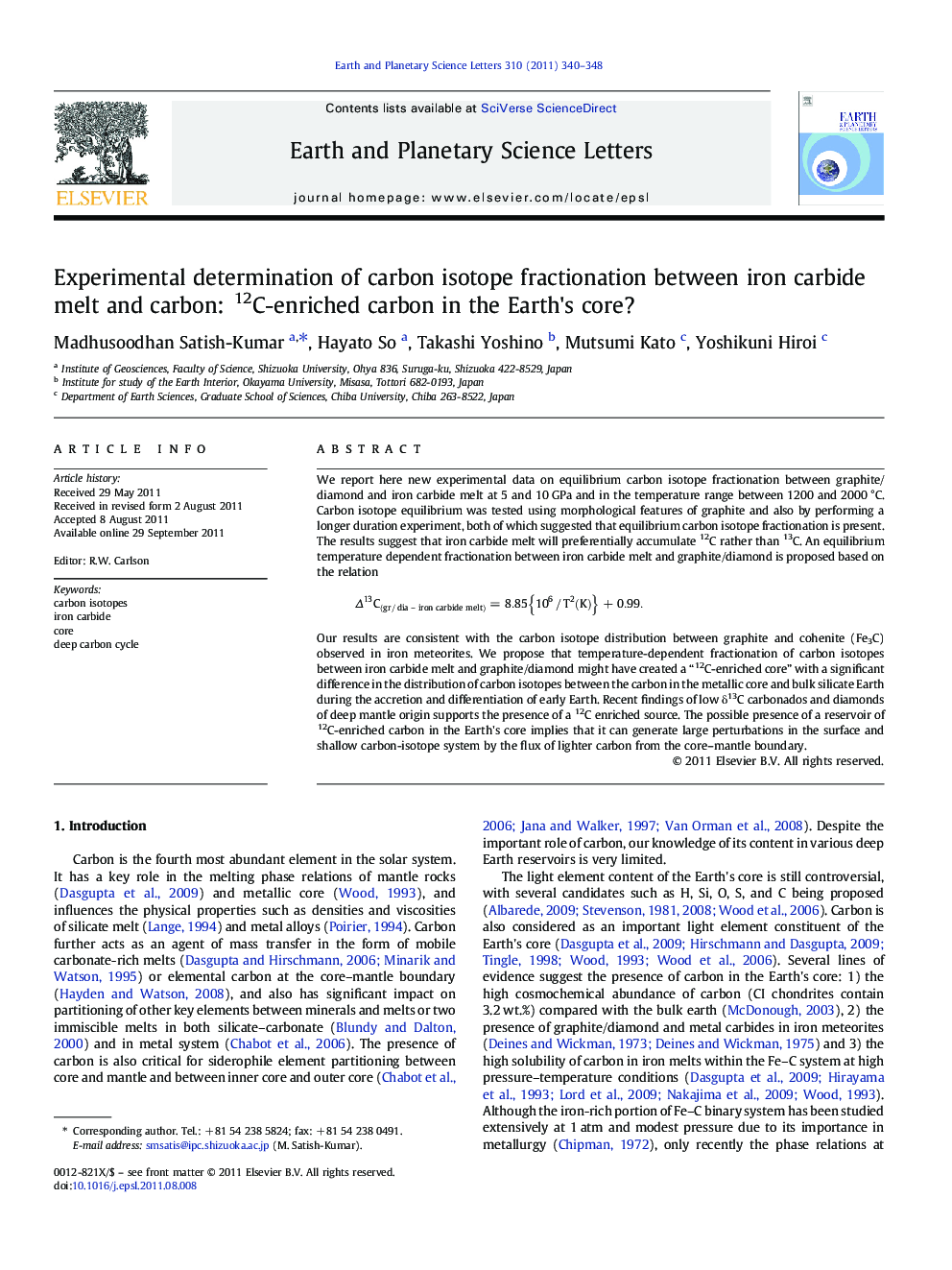| Article ID | Journal | Published Year | Pages | File Type |
|---|---|---|---|---|
| 4677747 | Earth and Planetary Science Letters | 2011 | 9 Pages |
We report here new experimental data on equilibrium carbon isotope fractionation between graphite/diamond and iron carbide melt at 5 and 10 GPa and in the temperature range between 1200 and 2000 °C. Carbon isotope equilibrium was tested using morphological features of graphite and also by performing a longer duration experiment, both of which suggested that equilibrium carbon isotope fractionation is present. The results suggest that iron carbide melt will preferentially accumulate 12C rather than 13C. An equilibrium temperature dependent fractionation between iron carbide melt and graphite/diamond is proposed based on the relationΔ13C(gr/dia – iron carbide melt)=8.85{106/T2(K)}+0.99.Δ13C(gr/dia – iron carbide melt)=8.85106/T2K+0.99.Our results are consistent with the carbon isotope distribution between graphite and cohenite (Fe3C) observed in iron meteorites. We propose that temperature-dependent fractionation of carbon isotopes between iron carbide melt and graphite/diamond might have created a “12C-enriched core” with a significant difference in the distribution of carbon isotopes between the carbon in the metallic core and bulk silicate Earth during the accretion and differentiation of early Earth. Recent findings of low δ13C carbonados and diamonds of deep mantle origin supports the presence of a 12C enriched source. The possible presence of a reservoir of12C-enriched carbon in the Earth's core implies that it can generate large perturbations in the surface and shallow carbon-isotope system by the flux of lighter carbon from the core–mantle boundary.
► Carbon isotope fractionation between iron carbide melt and carbon was estimated. ► A new carbon isotope thermometry for planetary cores is proposed. ► The Earth’s core is potentially a light carbon reservoir. ► Light carbon flux from core can cause perturbations on carbon isotope systematics.
